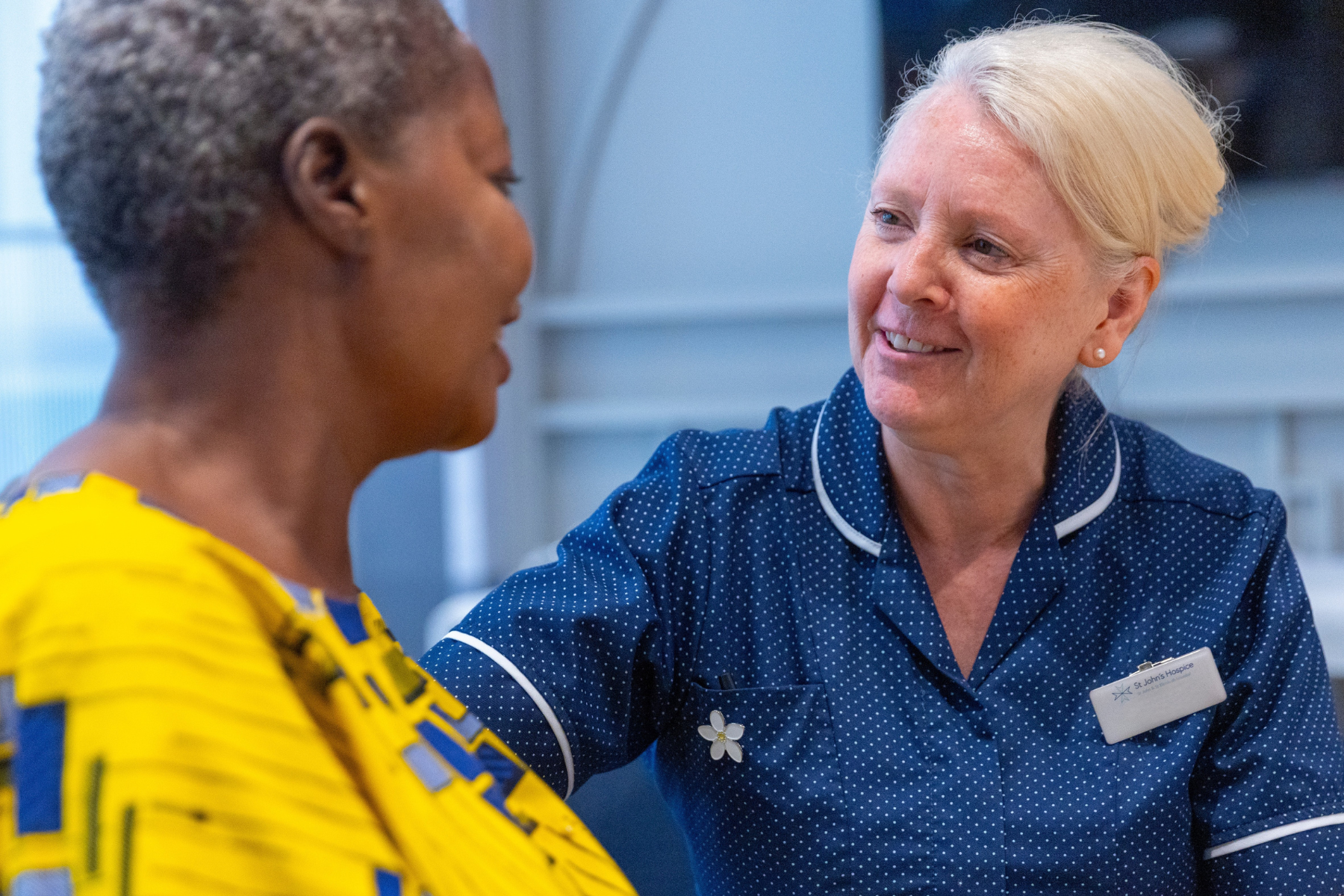What matters to you?
At St John’s Hospice the ‘What matters to you’ intention, in many ways is central to our ‘Putting People First’ ethos. To mark this years’ global conversation about ‘What Matters To You’, we spoke with Ann Bryan, Palliative Care Physiotherapist from our Hospice. Ann is a huge advocate about the power of listening and understanding – we hope you agree, her passion for the subject is contagious.
She started our conversation with, in many ways, the perfect summary: “‘What Matters To You’ can be the single question, that ensures patient and clinician truly understand what the concerns are. Professionals can sometimes be so occupied with solving ‘the what’, and establishing the right course of treatment, they can overlook ‘the why’ – by asking ‘what matters to you’ we understand the actual priorities of the person receiving our help.”
Where or when did you first become aware of ‘What Matters To You’?
“What Matters To You’ was first published in the New England Journal of Medicine 2012. It found its way to Norway then into NHS Scotland.
The team I was with at the time attended a conference in Glasgow 2017 where we overheard WMTY, thought it sounded interesting and brought it back to Hampstead. It is now well established within NHS England and around the world.”
At what point in a patient’s journey is it best asked?
Ideally, the WMTY question should be asked each day – different things are important at different points.
It also does not have to be just a medical question; its power is that it allows the patient to share more than just concerns regarding their illness if they feel able.
So, it’s something the whole caring team should utilise?
Definitely. It is important each person in the team understands the role they are performing in the patients’ wider life. Behind WMTY is a full questionnaire that should be asked when a patient is first admitted.
It includes questions such as:
- Who is important to you?
- How can we best help you?
- What would we be surprised to know about you?
- What matters to you today?
Have you any examples how you use it?
There are 3 elements that need to happen in order for it to really thrive:
- Ask what matters
- Listen to what matters
- Do what matters.
As an example, let’s imagine a patient who had stopped using one hand. If we stopped to ask, we would understand that the bandage on her arm keeps getting caught, so she no longer is happy to move it. By listening – we would understand that she didn’t want to get it caught and that’s why she stopped doing her physio treatment. So what we would do – is re-dress the bandage and cover with a tubifast. For a patient who’s mood had changed and was much quieter:
Ask – my sister and I fell out a while ago it’s playing on my mind.
Listen – I need to have a relationship with her before I’m too unwell.
Do – patient and family support able to mediate a meeting with a good outcome.
Neither of these examples are medical but in facilitating a solution the patient feels that their personal concerns have been acknowledged.
That’s really practical and intuitive. It’s easy to understand why it matters to ask.
I have had a couple of situations where patients have prompted me to ask them, literally – “You haven’t asked me what matters yet”. I think it shows that patients feel heard when the question is part of normal discussion.
What matters to you, feels like something very in-tune with our ‘Putting People First” ethos. Would you agree?
Completely. WMTY is a way of always ensuring the patients’ aims and wishes are at the forefront of any conversation including multidisciplinary team meetings internally, where it can focus the whole team on what is important to the individual. Definitely ‘Putting People First!’
What Matters To You is not something that only gets asked once a year – WMTY Day 2021 is on 9th June. The idea of having a day is to highlight the benefit of asking the question, to start a conversation that leads to patients and clinicians having greater understanding of what might help them.
You can find more information about the work Ann and her colleagues do at the hospice here. Join the conversation on social media by using #WMTY21.





